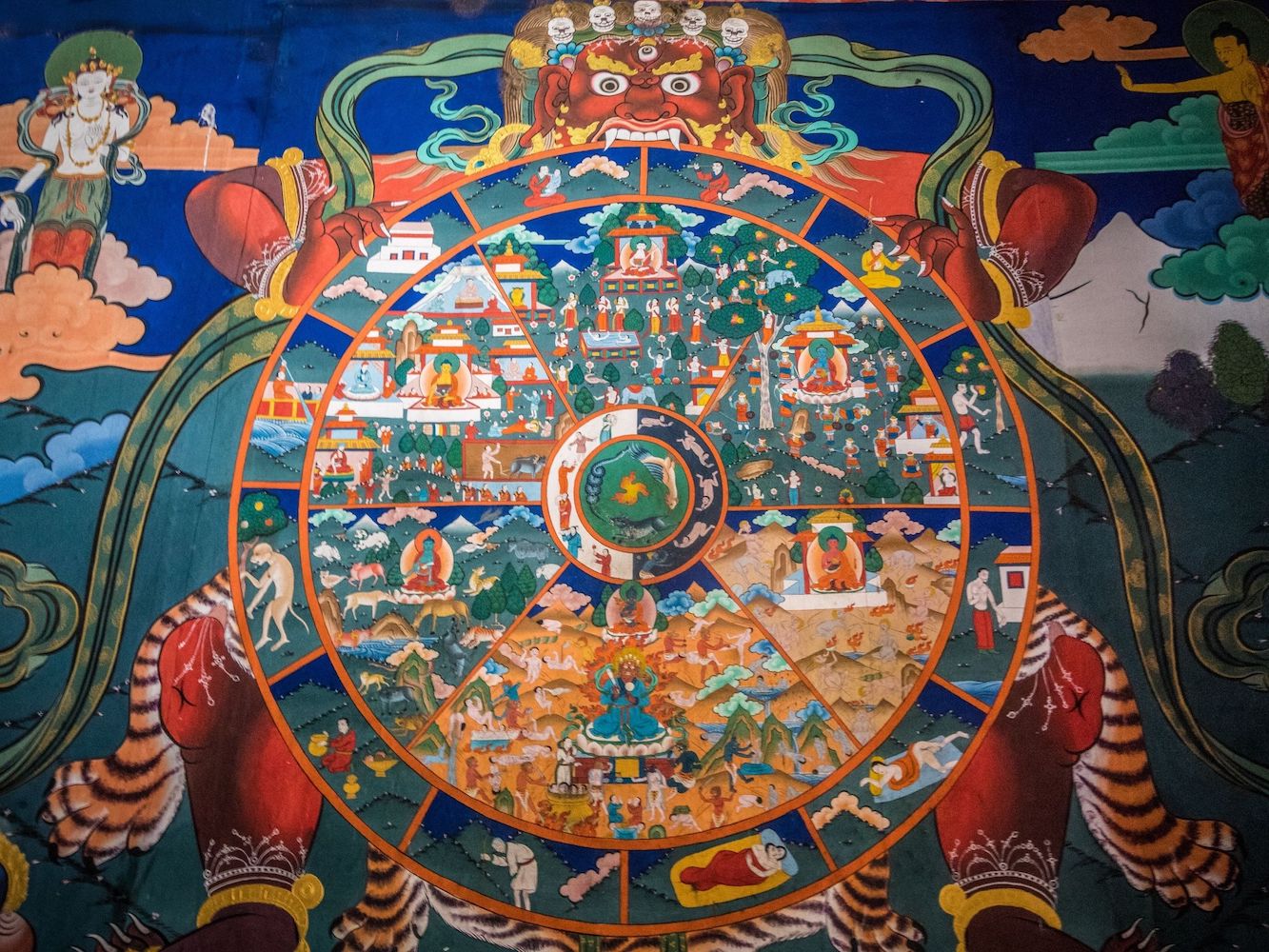Tackling the Yoga Sūtras in one go can be a daunting endeavor. From experience, I have started, stopped, and restarted many times. For this reason, I decided to write a monthly piece, for which I pick a Sūtra and let you know how it may be interpreted. The idea is to do so in small doses so that you can taste, swallow, and digest it before we present you with another one. Last month, we dove into the second sūtra and this month we’re focusing on the third. Here we go!
तदा द्रष्टुः स्वरूपेऽवस्थानम् ॥३॥
1.3. tadā draṣṭuḥ svarūpe’vasthānam.
tadā = then
draṣṭuḥ = the true self, the soul, the seer
sva = own
rūpe = color, form, nature
avasthānam = rests, abides
Then the true self abides in its own nature.
What happens when we still the mind, as prescribed by the previous sūtra? Will we still exist? Will our consciousness remain? In the third sūtra, Patanjali tells us that, yes, we still exist and, yes, consciousness remains. In fact, once we are freed from the citta vṛttis, which, as a refresher, is the fluctuations of the mind, we then gain knowledge of our true nature: you are puruṣa, the soul, the observer, the seer. You are not your body acting in and interacting with the world; you are not your mind, constantly thinking and desiring.
Multiple analogies are often used to describe the relationship between puruṣa, our innermost self, and citta, the mind. For instance:
- The mind is like a reflecting lake. The citta vṛttis are like external forces that act upon the lake. If the lake has a lot of waves due to wind, you will see a distorted reflection. If there is turbulence, and the water becomes dirty, you will see a hazy or dirty reflection. If the water is colored from impurity, you will see a tinted reflection. However, you, yourself, have not changed; it is simply the reflection that has changed. To see your true reflection, the water must be clean and calm, without external influence.
- Puruṣa is like a clear, transparent crystal, and the activities of the mind are like colored objects placed beside the crystal. As an object is reflected, the crystal appears to take on the object’s qualities (e.g. color, texture). However, the true nature of the crystal is not modified by the object’s presence. When the object is removed, the crystal remains and can be seen as it truly is: pure and clear.
To achieve this state of realization, the mind must still the incessant thought waves. According to yoga philosophy, the material world (prakṛti), including the mind, is made up of the three guṇas, translated as strings, threads, qualities, or properties:
- Sattva is characterized with lucidity, tranquility, wisdom, and happiness.
- Rajas has inclinations toward movement, activity, restlessness, and passion.
- Tamas is described by ignorance, delusion, disinterest, and dullness.
The guṇas, present in varying proportions in all objects in the physical world, are in constant tension with each other. One moment, one particular guṇa may be the dominant influence on the mind, while the next moment, another guṇa dominates.
“9Goodness attaches one to happiness, passion to action, O Bhārata (Arjuna), but dullness, veiling wisdom, attaches to negligence. 10Goodness prevails, overpowering passion and dullness, O Bhārata (Arjuna). Passion prevails, overpowering goodness and dullness, and even so dullness prevails, overpowering goodness and passion. 11When the light of knowledge streams forth in all the gates of the body, then it may be known that goodness has increased.”
Bhagavad Gītā, Ch.14
Based on the above descriptions, it is easy to see that to achieve yoga, sattva, the purest of guṇas, must be maximized, while rajas and tamas minimized. Rajas and tamas cause the mind to be attracted to thoughts and sense objects, thereby pulling puruṣa into the external world. The quality of sattva redirects the mind inward toward the inner self. The goal is for sattva to become prominent, ultimately controlling the presence of rajas and tamas to ensure a balanced life (e.g. eating the right amount of food – not too much or too little, sleeping the right number of hours – not too much or too little).
From moment to moment, as our thoughts and experiences of the external world change, so does our perception of ourselves and who we are. However, when the lake of the mind becomes still and clear, then the truth is no longer distorted; we get to see and know ourselves as we really are, always have been, and always will be.
Inquiring minds can dive deeper with these resources:
- A Source Book in Indian Philosophy by Sarvepalli Radhakrishnan and Charles A. Moore (1967)
- Yoga Philosophy of Patanjali by Swami Hariharananda Aranya (1984)
- The Yoga Sutras of Patanjali by Edwin F Bryant (2009)
- Light on the Yoga Sutras of Patanjali by BKS Iyengar (1993)
- Patanjali Yoga Sutras by Swami Prabhavananda (1991)
- The Yoga Sutras of Patanjali by Sri Swami Satchidananda (2012)














